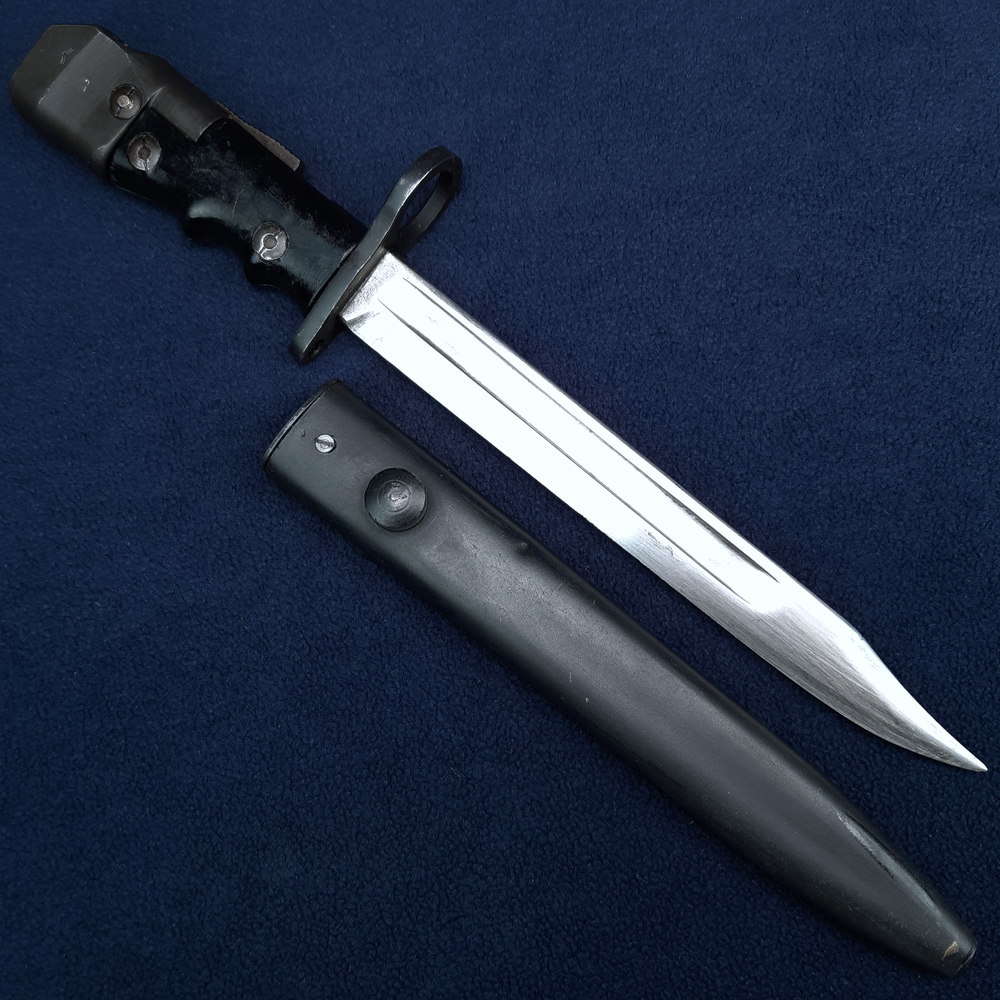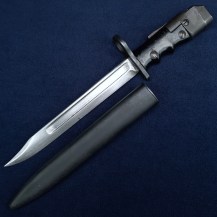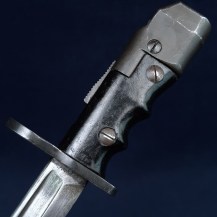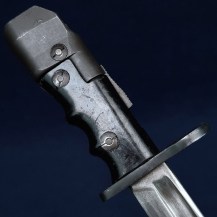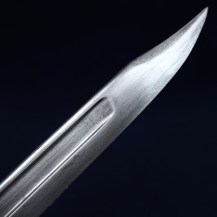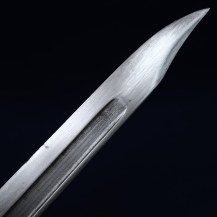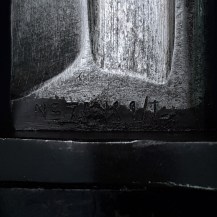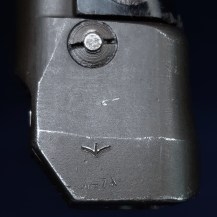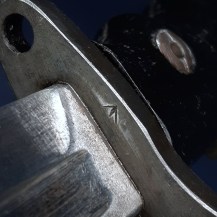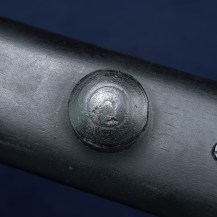British Lee Enfield No. 7 Mk 1 Land Service Bayonet with Black Grips, by B.S.A.
Single-fullered bowie knife blade with clipped point, blued for 5mm at the ricasso. Black grips made of Paxolin (resin-impregnated paper, similar to Micarta, and widely used today in circuit boards). Steel Mk I scabbard with steel throat piece and circular frog stud. Hilt and pommel blued.
The blade is stamped on one side at the ricasso with ‘No 7 MK 1/L’. The pommel is stamped on one side with a broad arrow War Department mark and ‘M47A’, indicating manufacture by the Birmingham Small Arms Company (B.S.A.), specifically their plant at Small Heath, Birmingham, which was assigned the dispersal code M47A during WW2. The flat of the hilt on the blade side and the frog stud of the scabbard are both stamped with a broad arrow.
The penultimate model of bayonet designed for the Lee-Enfield No. 4 rifle and Sten Mk 5 submachine gun, the No. 7 was an attempt to produce a bayonet that was equally useful as a utility/fighting knife and a mounted bayonet, by way of an innovative rotating pommel which contains the locking mechanism. 330,000 were produced between 1944 and 1948, but doubts about the rigidity of the mechanism under stress and its high cost of manufacture meant that the No. 7 was largely passed over for the simpler No. 9. The bayonet designed for the ill-fated EM series of experimental bullpup service rifles was essentially a strengthened No. 7.
The grips of these bayonets vary in colour due to different materials and formulations used to produce these early composite materials, but are generally red, shading towards brown in some examples. Black grips are a known variation and I have so far seen them predominantly on examples by B.S.A., and occasionally by Elkington – they are interchangeable parts however, so could readily have been swapped between bayonets of whatever make.
Some claim the black grips were intended for parade use or were for specific units e.g. the Guards, and I have indeed seen examples chromed and with parade frog, but former British Army armourer, collector and author Peter Laidler attests that both ‘black and brown paxolin grips were issued under the same part number and it really was just pot luck as to whatever colour came through the Ordnance system. It was nothing to do with whatever unit they were issued to’.
This would seem to confirm that there was no differentiated role intended for the black version, it was simply a variation of the same product. Perhaps those found in parade order were selected at the unit level for that role for purely aesthetic reasons, not as a matter of policy. Laidler also notes that black grips seem to be scarcer in civilian collecting today than they were in military service at the time, so there may be survivorship bias at work.

